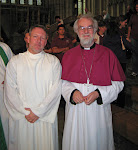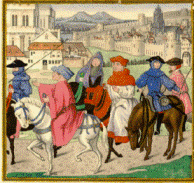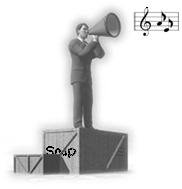Thomas More was executed by Henry VIII in 1535 at the Tower of London for refusing to accept Henry's ecclesiastical supremacy. More's body -- as was the case with most executed prisoners -- was buried in St. Peter's ad Vincula within the walls of the Tower of London. His head was placed upon a spike on London Bridge as a warning to potentials traitors, as was also the custom.
Legend has it that Margaret Roper, Thomas More's daughter, bribed the keeper of London Bridge to dislodge the head and drop it to her barge in the river below. It is known, however, that Margaret Roper was called before the London Council and charged with stealing the head. However, charges were dropped and she was allowed to keep it. She is believed to have carried it to Canterbury, the longtime home of the Roper family.

The gate to the Roper family home.


 The plaque was placed in 1932 over the site of the Roper family crypt.
The plaque was placed in 1932 over the site of the Roper family crypt.
 The vault was excavated in 1978 when this photo was taken. The Roper family's coffins were found underneath the pile of rubble you see in the bottom of the photograph. And in the niche in the wall of the vault was found the remains of a skull believed to be that of Thomas More.
The vault was excavated in 1978 when this photo was taken. The Roper family's coffins were found underneath the pile of rubble you see in the bottom of the photograph. And in the niche in the wall of the vault was found the remains of a skull believed to be that of Thomas More.
Within St. Dunstan's Church are two windows depicted Thomas More and his family.









3 comments:
How totally powerful is the story of Saint Thomas More, it crosses the centuries like a high-speed train. I am up and a bit sleepless and thought I'd look at More pictures on Google images.
It's great that St Dunstans' church (presumably Chrurch of England)has the breadth of piety to feature a full stained glass window of More and family.
Yes, Philomena, St. Dunstan's is a Church of England parish. And Thomas More is celebrated by Anglicans on June 22nd, his feast day in the Church of England's calendar.
It is enlightening to see the final resting place of my ancestors.
Post a Comment